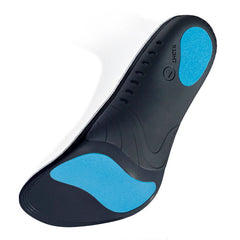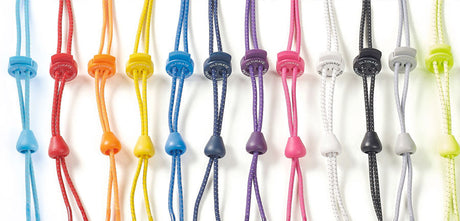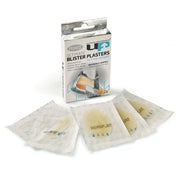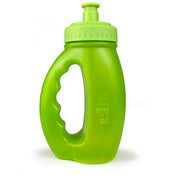Wearing insoles for Plantar fasciitis is an important part of treatment and reduces heel pain symptoms. Poor foot biomechanics is a key factor which increases your chance of suffering this common condition.
What is Plantar fasciitis?
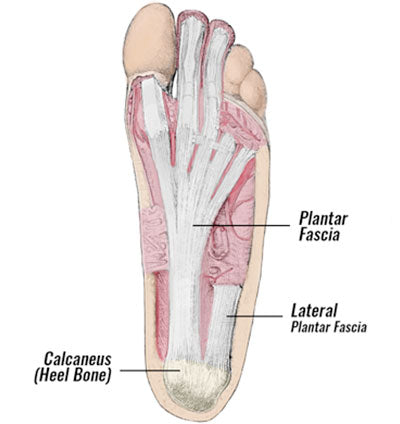
Plantar fasciitis is probably the most common cause of heel pain. It is inflammation (or more likely degeneration) of the Plantar fascia at the point it attaches to your heel.
Overuse is generally considered the main cause of Plantar fasciitis heel pain, however, a number of factors make overuse more likely. Not least of which is your foot type and the way you run.
Foot types & Plantar fasciitis
You have probably heard this many times before. In general there are three foot types in runners; overpronators, neutral and supinators.

Overpronators have feet that roll in or flatten as you run. In effect, your foot arch collapses as you put weight on it. Supinators (or over-supinators) have feet that roll out. If you over-supinate then you will most likely have a rigid, high arched foot. Neutral runners have naturally great feet for running.
Overpronators
Overpronators are much more at risk of suffering Plantar fasciitis. As your foot strikes the ground the arch under your foot flattens.

As a result, the Plantar fascia under your foot over-stretches. A good amateur runner may take 1500 steps per mile. This means 45 000 steps if you run 30 miles a week. Running on flat, hard surfaces means putting the same load through the Plantar fascia every step.

This repeated stretching causes inflammation and eventually degeneration of the Plantar fascia. In particular, at the point it attaches to the heel. Therefore causing heel pain. Plantar fasciitis insoles prevent this.
Insoles for Plantar fasciitis
If you are suffering from Plantar fasciitis heel pain then insoles help as part of a full Plantar fasciitis treatment and rehabilitation program.
Wearing an arch support insole such as the F3D Support+ helps control the position of your heel and supports your arch as you run, walk and even stand.
When to wear insoles for Plantar fasciitis
When you run the forces through your foot and lower leg are much larger as you strike the ground. Wearing your insoles in running shoes is important. If you are suffering from Plantar fasciitis then you will probably be resting or at least reducing your training load.
However, most people also spend a lot more time walking or standing. Therefore, it is equally important to wear insoles for Plantar fasciitis in your normal work or day to day shoes as well. The more you can stop the Plantar fascia over-stretching, the more quickly you are likely to recover. So wear arch support insoles and footwear as much possible from the moment you get out of bed to the moment you get back in.
What about neutral runners and supinators?
Whilst Plantar fasciitis is less common in other foot types, if you over supinate then you benefit from an insole with aditional cushioning such as the F3D Cushion+. Supinators generally have rigid, high arched feet which lack natural shock absorbtion.
If you are lucky enough to have a neutral running gait then you may still benefit from wearing insoles. Even perfect feet were not designed to run repeatedly on harf, flat surfaces. The F3D Neutral insoles sits in between, giving the right balance of shock absorption and arch support to not only reduce the risk of injury, but improve performance with a more efficient foot strike and gait.


